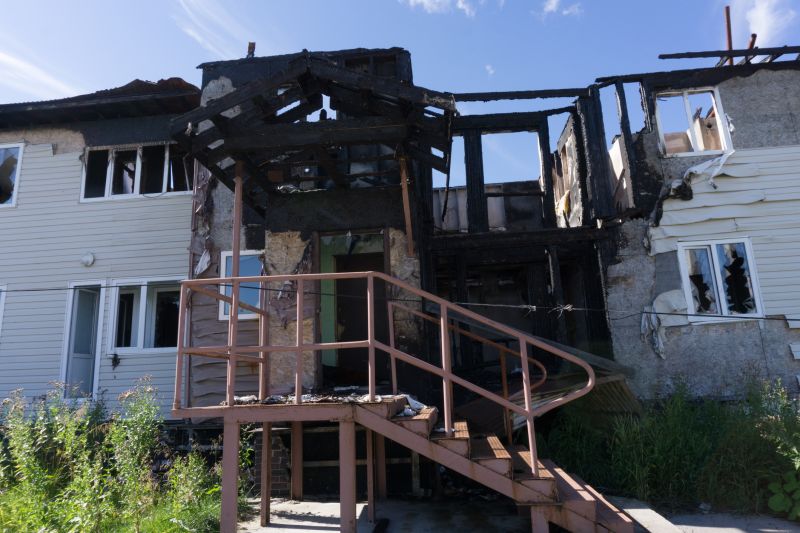Leading Fire Damage Restoration Supplies For Professional Results
Equip yourself with industry-standard products that deliver reliable performance during fire cleanup and reconstruction.
 Fire restoration projects require a comprehensive approach to ensure that affected areas are thoroughly cleaned, sanitized, and restored to their pre-damage condition. The process often involves removing soot, smoke residues, and other contaminants that can linger after a fire. Proper restoration not only improves the aesthetic appearance of a property but also helps prevent long-term health issues caused by residual toxins. Selecting the right products is essential for effective restoration, and a variety of specialized tools and materials are available to meet different needs and severity levels.
Fire restoration projects require a comprehensive approach to ensure that affected areas are thoroughly cleaned, sanitized, and restored to their pre-damage condition. The process often involves removing soot, smoke residues, and other contaminants that can linger after a fire. Proper restoration not only improves the aesthetic appearance of a property but also helps prevent long-term health issues caused by residual toxins. Selecting the right products is essential for effective restoration, and a variety of specialized tools and materials are available to meet different needs and severity levels.
Top Overall Option
Multi-Purpose Fire Restoration Cleaning Kit
A versatile cleaning kit designed for comprehensive soot and smoke residue removal, featuring a range of cleaners, degreasers, and odor neutralizers suitable for various surfaces. It provides a complete solution for professional and DIY fire restoration projects, emphasizing safety and effectiveness.
Types of Products For Fire Restorations
Soot and Smoke Cleaners
Specialized solutions formulated to break down and remove soot and smoke residues from surfaces and materials.
Odor Neutralizers
Products designed to eliminate persistent smoke odors and leave spaces smelling fresh.
Fire-Resistant Drywall
Building materials that resist heat and flames, used for structural repairs after fire damage.
Sealants and Coatings
Protective layers applied to surfaces to prevent further damage and contain soot residues.
Protective Gear
Respirators, gloves, and coveralls essential for safety during fire restoration tasks.
Thermal Imaging Cameras
Devices used to detect hidden hotspots and moisture infiltration within walls and ceilings.
Moisture Meters
Tools to measure moisture levels in structural components to prevent mold growth.
Industrial Vacuums
Heavy-duty vacuums capable of removing soot, ash, and debris from surfaces and air.
Cleaning Cloths and Rags
High-absorbency cloths for wiping down surfaces after cleaning agents are applied.
Reinforcement Materials
Steel or fire-resistant framing components used to rebuild structural elements.
Popular Choices
Widely used solutions for removing soot and smoke residues from various surfaces.
Trending products for effectively neutralizing lingering smoke smells.
Commonly selected for structural repairs in fire-damaged buildings.
Essential safety gear popular among restoration professionals and DIYers.
In-demand tools for assessing hidden damage and moisture intrusion.
Preferred for their power and efficiency in soot and debris removal.
High-quality cloths favored for their durability and absorbency during cleaning.
Popular for sealing surfaces and preventing further damage.
Frequently used to detect hidden moisture and prevent mold issues.
Commonly chosen for structural rebuilding after fire damage.
In fire restoration, cleaning agents and degreasers play a vital role in breaking down soot and smoke residues. These products are formulated to adhere to surfaces and remove stubborn deposits without damaging underlying materials. Additionally, odor neutralizers are used to eliminate persistent smoke smells, providing a fresh and clean environment. Protective gear such as respirators, gloves, and coveralls are also crucial to safeguard workers from harmful particles and fumes during the restoration process.
Structural repair products, including fire-resistant drywall, sealants, and reinforcement materials, help restore the integrity of the affected building elements. In cases of extensive damage, thermal imaging cameras and moisture meters assist professionals in assessing hidden damage and moisture infiltration. Proper documentation and cleaning supplies, like industrial vacuums and cleaning cloths, support the overall efficiency of the restoration process. When choosing products, it is important to consider their compatibility with existing surfaces, safety data, and ease of use to ensure a thorough and safe restoration operation.
Key Buying Considerations
- Compatibility with surfaces and materials involved in the restoration process.
- Effectiveness of cleaning agents in removing soot, smoke, and odors.
- Safety features and proper certifications for protective gear and chemicals.
- Ease of use and application instructions for cleaning and repair products.
- Durability and longevity of structural materials like fire-resistant drywall.
- Availability of replacement parts or refills for cleaning equipment.
- Assessment tools like thermal imaging cameras and moisture meters for thorough inspection.
- Environmental conditions of the site, including humidity and ventilation needs.
- Budget considerations balanced with the quality and effectiveness of products.
- Manufacturer reputation and product reviews from trusted sources.
- Compliance with local building codes and safety regulations.
- Compatibility with existing building systems and materials.
- Training or guidance needed for proper application of specialized products.
- Storage and handling requirements for chemicals and equipment.
- Availability of customer support or technical assistance from suppliers.
